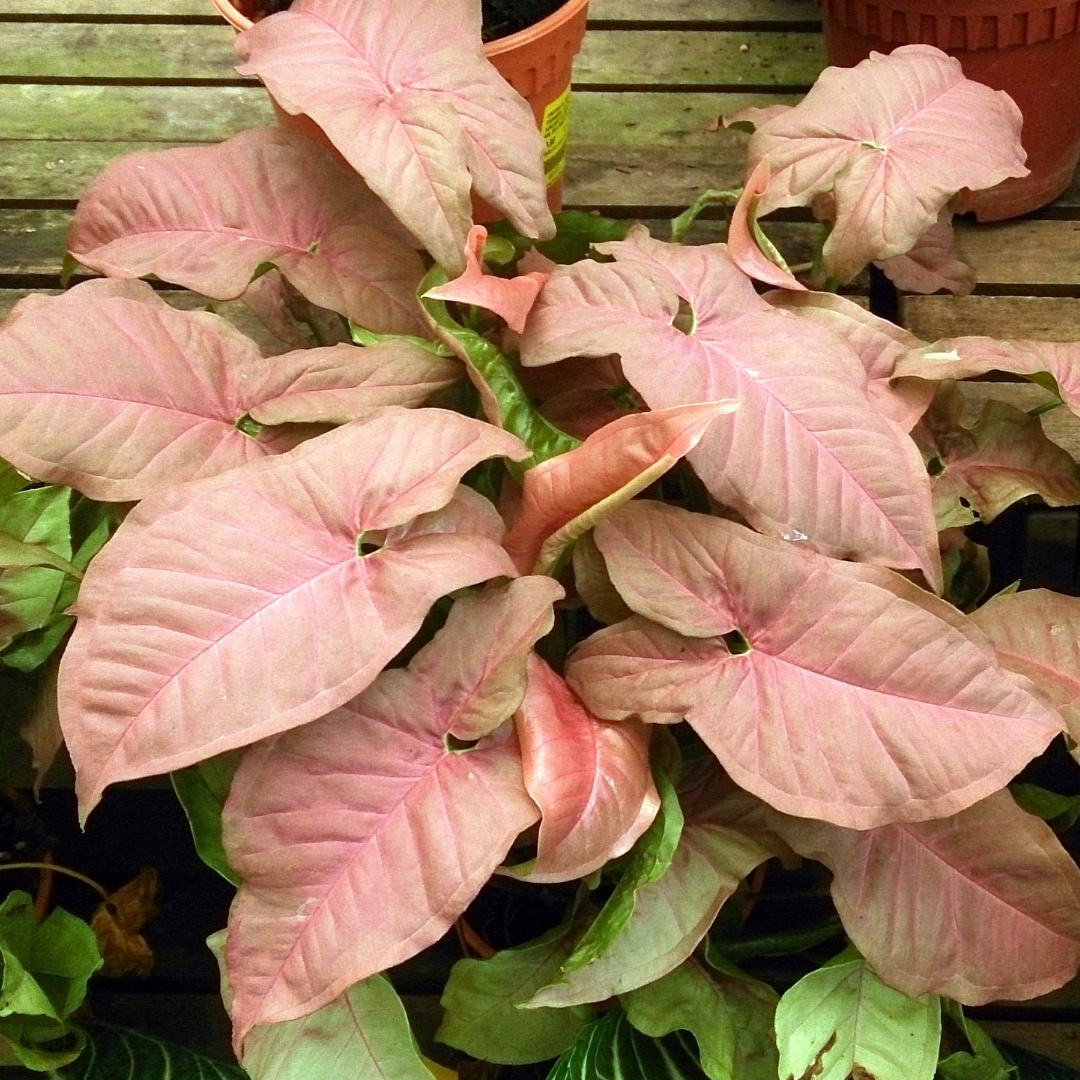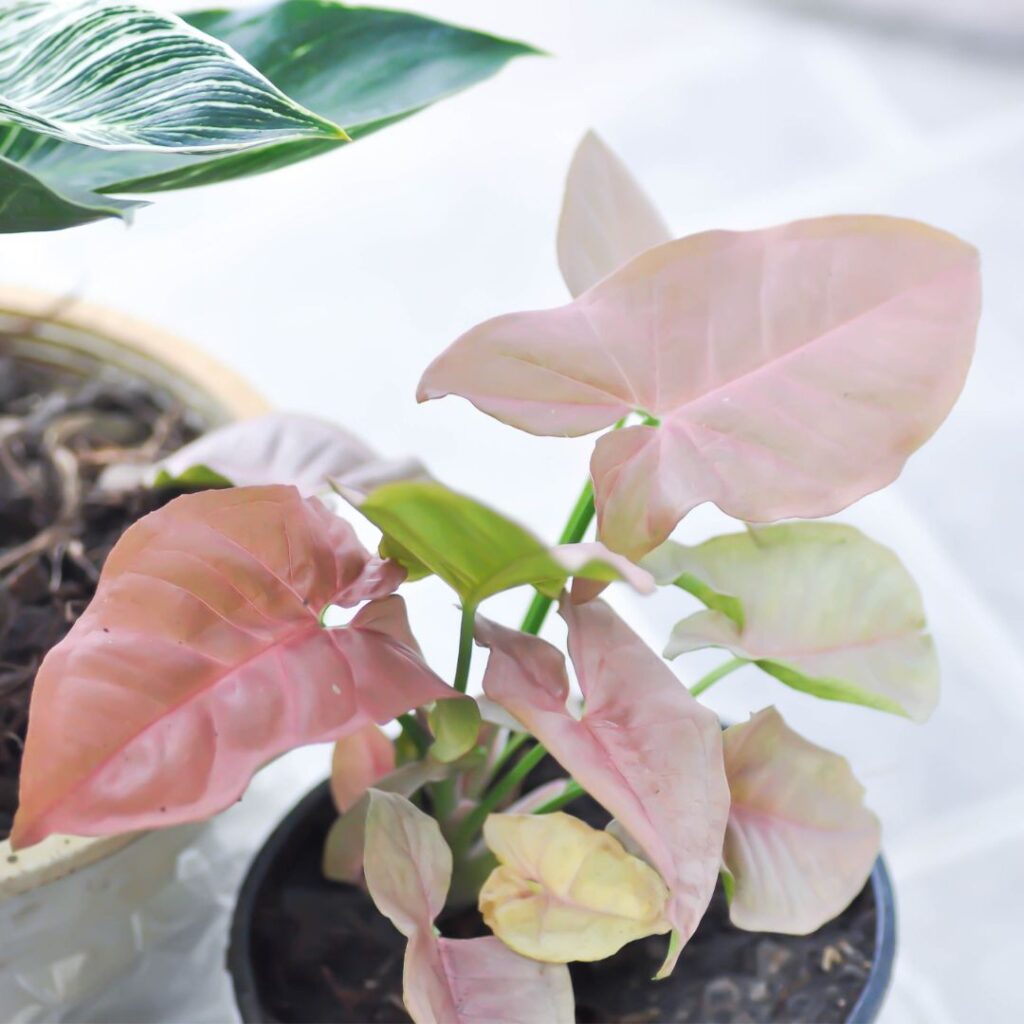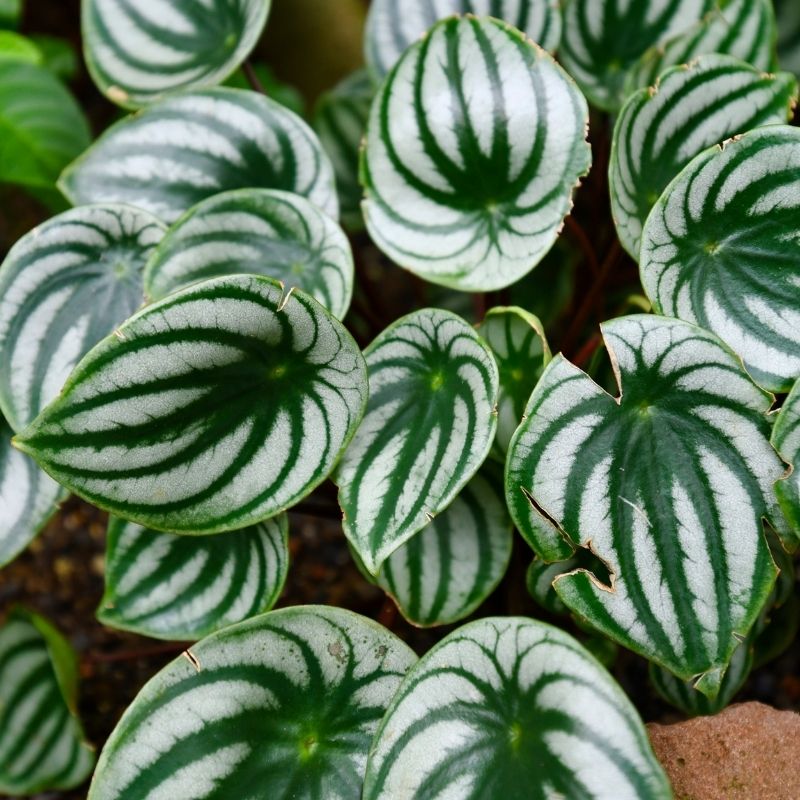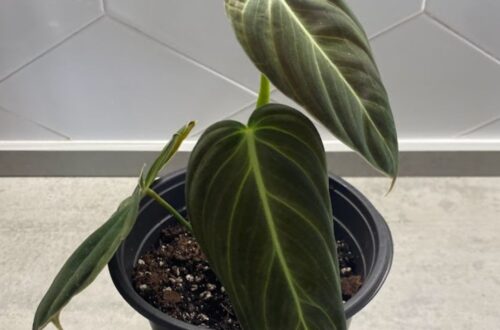
Pink Syngonium
The pink syngonium is an easy to care for pink-variegated plant, we run down all you need to know in the following guide. The key to pink syngonium care is to give it bright indirect sunlight and make sure the soil does not get too soggy.
Pink Syngonium Summary
| Light needs: | Medium to bright indirect sunlight. |
| Watering needs: | Water if top 50% of soil is dry, check weekly. |
| Fertilizer: | A balanced fertilizer once a week in spring and summer. |
| Soil: | A well draining potting compost. |
| Humidity: | 40-50%. |
| Temperature: | 15-27°C (59-81°F). |
| Where to buy: | Try our list of Rare Plant Shops or Etsy. |
| Common issues: | Underwatering and overwatering. |
Introduction
The pink syngonium aka the pink syngonium podophyllum is a version of the popular syngonium podophyllum but with pink variegated areas of it’s foliage. It’s a relatively cheap way of getting pink variegation in your home without shelling out for a really expensive philodendron.
See also: Syngonium Milk Confetti, Syngonium Albo Care, Types Of Syngonium Plants, Syngonium Soil, Variegated Syngonium, Scindapsus Treubii Moonlight, Syngonium Rayii, Croton Plant Care.
Tip: we recommend Etsy for buying plants. Look for the best rated seller you can, and try to buy as close to your home as possible so the plant does not travel too far.
A note about affiliate links: when you buy a plant, pots, soil, or other goods through links on this article we sometimes earn a commission. It doesn’t cost you anything, but it really helps us out if you do use them. Thanks a lot! An example of this is if you buy a plant on Etsy using this link. Read our privacy policy for more information. Thanks again.
Light Needs
Medium to bright indirect sunlight. They need a decent amount of light to encourage and maintain their variegation, it should not be direct sun though as this can burn the leaves.
How Often to Water A Pink Syngonium
Water it if the top 50% of soil is dry, check it once a week. They don’t like to totally dry out, but at the same time must not get waterlogged. They can get root rot relatively easily.
Tip: wait ten minutes after watering the plant then tip out any excess water from the saucer or external pot, as these can be prone to root rot if left in soggy soil.
Fertilizer
Feed a balanced fertilizer once a week in spring and summer. They grow quicker if you can feed them. Do not feed them in the winter.
Soil
A well draining potting compost is necessary to avoid water logging and root rot.

Pink Syngonium Propagation
It is really easy to propagate your pink syngonium, they grow quickly and easily and root well. They can be easily propagated by taking a node cutting following these steps:
- Take the cutting with at least 2 leaves and a node.
- Let it callous over for an hour.
- Put it in a jar of filtered tap water to root for a month.
- Once the roots have started to grow you can add it to pot of wet sphagnum moss or soil.
- Put it in a bright and warm spot (no direct sun though), and keep it moist.
- It should root within a month or two.
- Once it starts growing new leaves you can pot it up.
When To Repot
Repot it when it outgrows it’s current pot, they can grow quite fast. You’ll see roots growing through the bottom of the pot and you’ll know it’s time. They grow quickly so are really good to cut back and propagate.
Humidity
40-50% humidity is ideal for syngoniums, to be honest they’ll do well in most areas of your home, but will flourish in the more humid rooms.
Temperature
15-27°C (59-81°F) is the optimum temperature range during the day. Don’t let them get too cold in the winter or at night and they’ll grow well, aim for 5°C (41°F) as minimum temperature.
Pink Syngonium USDA Zone
Zones 10-11.
Where To Buy
Try our list of Rare Plant Shops or Etsy.
Other Names
Syngonium neon robusta, pink arrowhead plant, syngonium pink splash, pink syngonium podophyllum.

Pink Syngonium Varieties
There are lots of pink syngoniums varieties on sale, these are some of the better know types:
Neon Robusta – all pink with a neon glow at the edges.
Syngonium Pink Perfection – very bright pink consistent color all over the leaf.
Pink Allusion – light pink with a green hue at the edges.
Pink Splash – green with pink splotches like paint splashes.
Strawberry Ice – a really deep reddy pink and dark green leaved syngonium.
Pink Spot – a light, almost neon green leaf with pink areas and hue.
Milk Confetti – white and pink leaf awesomeness!
There are a few others too, with plenty of new varieties being grown and sold.
FAQs and Common Problems
Underwatering and overwatering are common issues which can both cause yellowing of the leaves. Make sure you water them properly and you’ll avoid most issues. Look out for pests like fungus gnats at watering.
Pink Syngonium Leaves Turning Brown
Browning leaves are normally due to lack of moisture, so you need to water more and/or up the humidity levels. Firstly check if the soil is wet though, as in a few cases it could be browning due to overwatering. It is really easy to tell to be honest if the soil is dry or wet, and if the brown is a dry crispy brown or a wet moldy feel. Then water accordingly and add humidity where necessary.
Pink Syngonium Turning Green
Syngoniums can revert (meaning they can lose their variegation) if given too much or too little light, so make sure it has plenty of indirect sunlight but no direct.
They need light, but not too much. For most variegated plants the answer is always to up the light to encourage variegation. This is true of the pink syngoniums too, if they get too little light they can start to revert to green, however in some cases they can also start to go green if given too much strong light. So you need to make judgement call: if the plant is in a dark part of the room then move it towards the window, but if it is already in south facing window or under a grow light then try moving them back from the light.
You can then cut the green reverted leaves off back to the node. This can sometimes encourage them to grow back variegated.
Why Are My Pink Syngonium Leaves Curling?
Curling leaves are normally due to a lack of humidity or lack of mositure, make sure your plant is humid and you are watering it well. They can soemtimes get curling leaves from sunburn, so check your plant is not in direct sunlight, if it is then move it back a bit.
Pink Syngonium Scientific Name
Syngonium podophyllum ‘pink’.
Can Pink Syngonium Grow In Water?
Yes they can grow in water alone, you can grow them in a jar and the roots look great.
Is It Toxic To Cats?
It toxic to pets if ingested, so seek vets advice if you think your pet might have eaten any.
Pink Syngonium Vs Neon Robusta
The neon robusta is a much lighter pink than the normal pink syngonium and has a neon hue to it.
Syngonium Neon Robusta Vs Pink Allusion
These two are very similar, but the pin allusion is a more pastel pink and the neon robusta has a neon hue to it.
Syngonium Pink Perfection Vs Neon Robusta
The pink perfection is a really bright pink, it looks dyed. And the neon robusta is darker with a neon hue to it.
Additional Resources
Buy: we recommend a digital thermometer hygrometer (amazon affiliate link) to measure humidity.
Links:
- More info on the RHS plant page.
Other Articles You Might Like
Hope you liked our guide, you might also like these articles: Syngonium Erythrophyllum, Monstera Dubia, Water Propagation.
Please follow us on Instagram and Pinterest for regular plant updates and occasional plant giveaways.




